レポート
Wonder the World Vol.26: “Angkor Wat: A Symbol of Culture and Life” (アンコールワット:文化と命の象徴)
ジホ(韓国)
こんにちは、みなさん!私は韓国出身のジホです。現在、大分県別府市にある立命館アジア太平洋大学(APU)の2年生です。
この夏、私はグローバル・イマージョン・キャンプ2025にキャンプリーダーとして参加しました。この記事では、その中での体験のひとつを皆さんと共有できることをとてもうれしく思います。
Jiho (South Korea)
Hello everyone! I am Jiho from South Korea and I am currently a second-year student at Ritsumeikan Asia Pacific University in Beppu, Oita. This summer, I joined the Global Immersion Camp 2025 as one of the camp leaders. I am very happy to share one of my experiences with you in this article.

Growing Up Abroad
In this article, I want to share my experiences of the Angkor Wat, a place that became very meaningful to me during my high school years in Cambodia. Have you ever lived or studied in another country? Well for me, my family moved to Cambodia when I entered junior high school. Growing up in a foreign country gave me many unique experiences, and visiting the Angkor Wat was one of the most memorable.
What is Angkor Wat?
Angkor Wat is the largest monument in the world. It is a temple that is located in Siem Reap province, Cambodia. It was built in the 12th century by King Suryavarman II as a Hindu temple but later became a Buddhist temple. It is now an important symbol of pride and strength for the country, which is why it even appears on the national flag. Because of its cultural and historical importance, it was recognized as a UNESCO World Heritage Site in 1992! Every year, millions of tourists from around the world visit Angkor Wat.
Quiz 1: Can you guess how big the Angkor Wat is?
A. 1,626,000 m^2
B. 14,720 m^2
C. 924,400 m^2
Beauty in Stone
The name “Angkor Wat” means “City of Temples” in the Cambodian language, and as you can see in the photos, the site truly feels like one huge city. It is surrounded by a wide moat, and has tall towers standing high above the temple. The walls are filled with carvings that show stories of gods, battles, and even daily life. The details are so clear that even after hundreds of years, they still look alive. Its size and beauty makes walking through the temple like stepping into an ancient storybook. It is especially beautiful during the sunrise, when the sun rises behind the towers and the water in front of it reflects the temple!
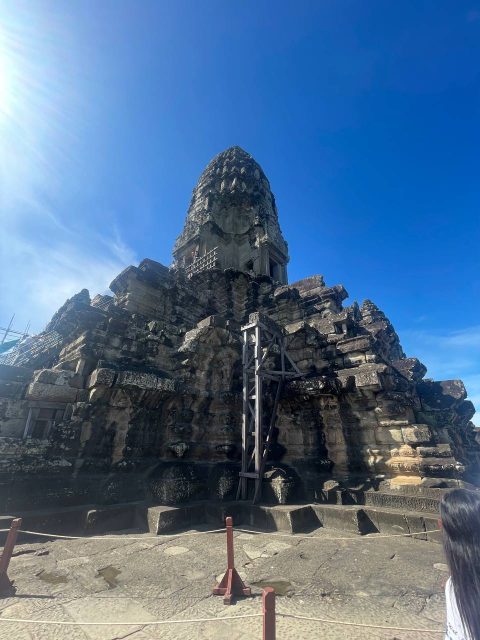
Quiz 2: What shape are the towers designed to look like?
A. Palm trees
B. Lotus flowers
C. Bells
Running for Hope
For me, Angkor Wat is more than just a tourist site. In my high school, we went on a school trip to Siem Reap every year to join the annual Angkor Wat International Half Marathon. The event brought together people of many ages and from numerous countries. What made it even more meaningful was its purpose. For more than 28 years, the event supported landmine victims, who were hurt from landmines in war long ago. All entry fees and donations were used to give them artificial legs, social programs, and education. Knowing that the run could help such communities made the experience very special.
Quiz 3: Who can join the Angkor Wat International Half Marathon?
A. Palm trees
B. Lotus flowers
C. Bells
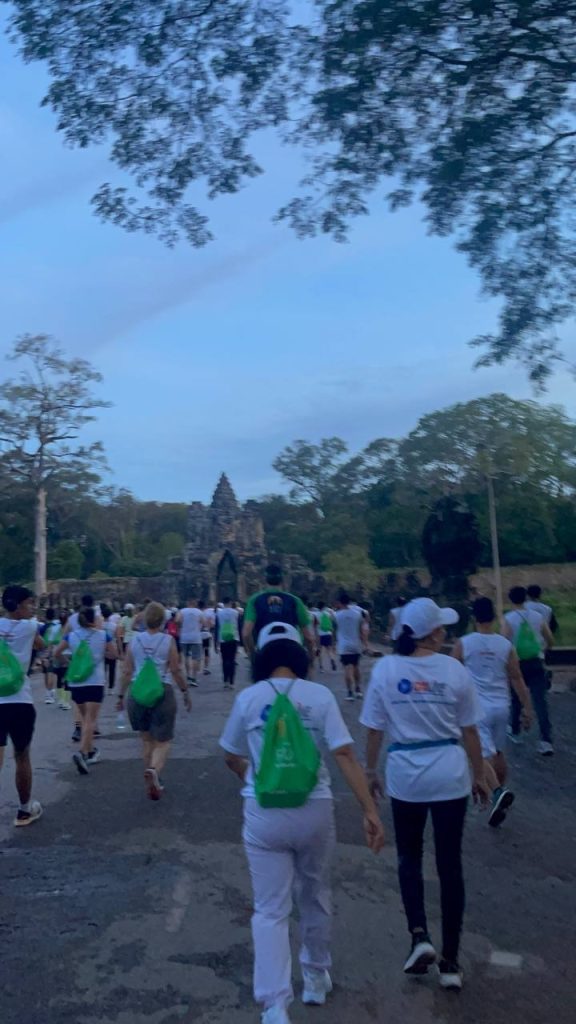
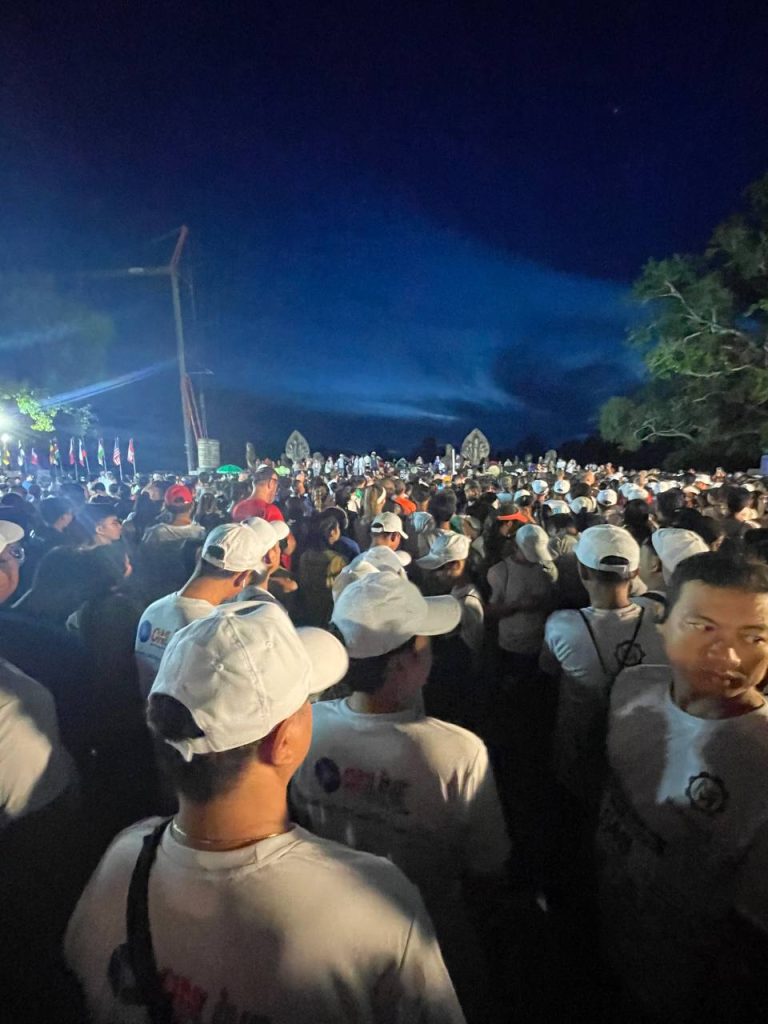
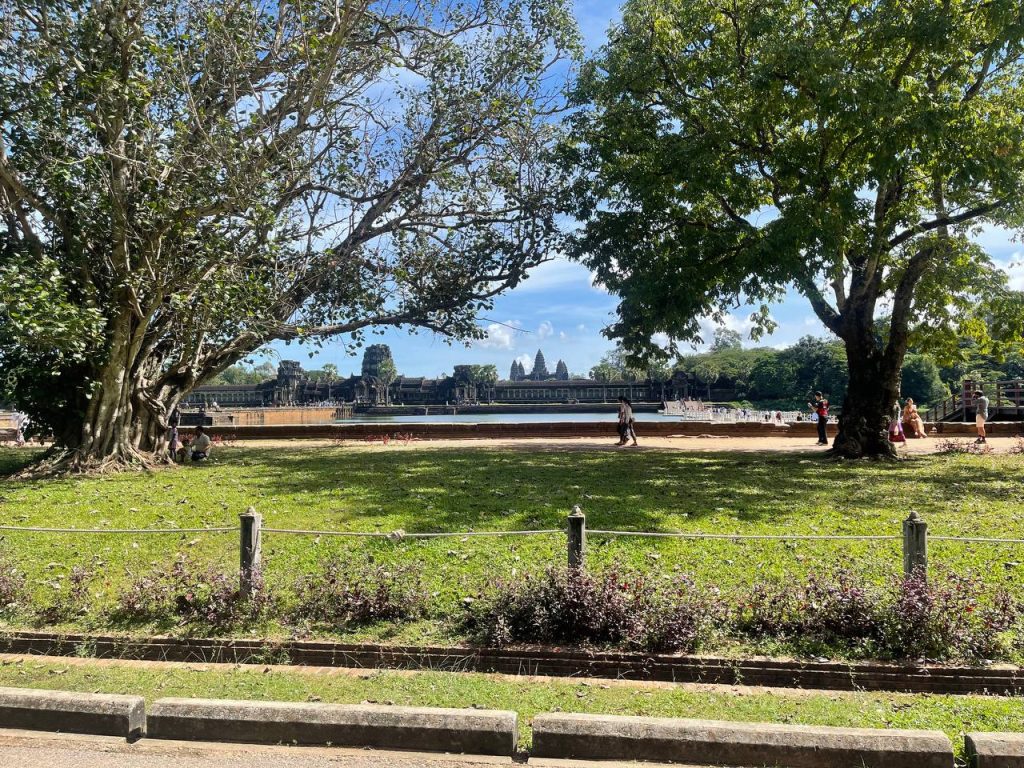
A Living History
I clearly remember waking up very early in the morning, walking to the venue, and running through the temple grounds at sunrise. I was surrounded by both friends and strangers from many countries. The sound of footsteps and laughter all around made the atmosphere something I never forget to this day. In those moments, Angkor Wat felt like a living place where people and cultures meet.
Let’s think about it!
- Have you ever joined a cultural or charity event like this?
- Which World Heritage Site have you visited, or which one would you like to visit?
- How many World Heritage Sites can you find in or near your country?
This experience helped me see that history is not just in books but something alive that can inspire us today. I hope my story encourages you to learn about other cultures and enjoy the beauty of people and traditions coming together. Why don’t you visit the Angkor Wat and take part in a fun, meaningful experience?
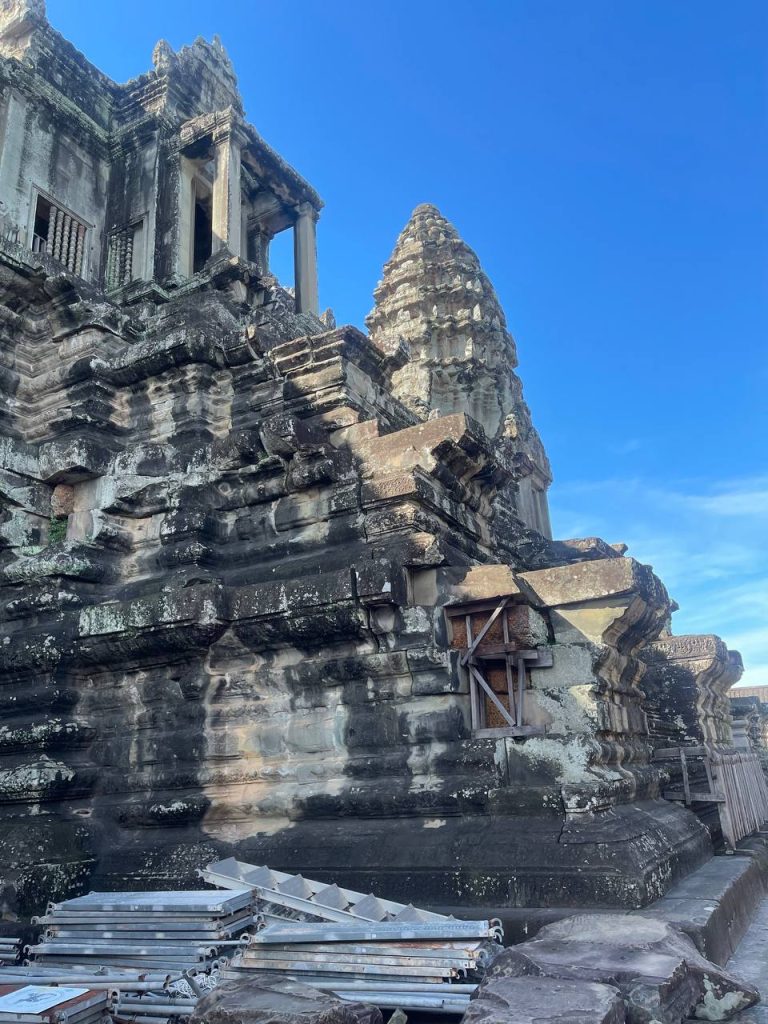
この記事のまとめ
アンコールワット:文化と命の象徴
筆者は中学から高校時代をカンボジアで過ごし、その中でアンコールワットが特別な存在になりました。
アンコールワットは12世紀に建てられた世界最大級の寺院で、現在は仏教寺院として世界遺産にも登録されています。壮大な建物や美しい彫刻、朝日の中での景色は圧巻で、まるで歴史の物語に入り込んだような体験ができます。
筆者は毎年、地雷被害者支援のための「アンコールワット国際ハーフマラソン」に参加し、多くの人と走る中で「歴史は生きている」と実感しました。この経験を通して、文化や人とのつながりの大切さを学び、皆さんにもアンコールワットを訪れて特別な体験をしてほしいと願っています。
Quiz Answers:
- Quiz 1 : A. 1,626,000 m^2
- Quiz 2 : B. Lotus flowers
- Quiz 3 : C. Anyone who wants to!
New words List
Currently – 現在
Monument – 記念建造物/モニュメント
Located – 位置している
Province – 州/県(カンボジアの場合は「州」)
Century – 世紀
National flag – 国旗
Recognized – 認定された
Heritage Site – 遺産(世界遺産など)
Tourists – 観光客
Moat – 堀
Carvings – 彫刻
Extensive galleries – 広大な回廊
Battles – 戦い/戦争
この記事の感想を、ぜひ教えてね!
この記事が気に入ったら、ハートのボタンを押してね!
バックナンバー

Wonder the World Vol.22: “The Secret Life of Mitochondria”(ミトコンドリアのひみつの世界)
シャ(マレーシア出身)こんにちは!私はシャです。マレーシア出身で、現在は日本の新潟で生命科学の分野の科学者として働いています。私は、ビタミンや抗酸化物質などの体に良い食品成分が、どのように...

Wonder the World Vol.9: “Gardening: Britain’s Favourite Hobby”(イギリスガーデニングの魅力)
エレナ (イギリス出身)2009年にKUMONのイマージョン キャンプリーダーを務める。現在は家族で兵庫県在住。翻訳の仕事をしていて、今年は日本に来て20周年!イギリス人はガーデニングがと...

Wonder the World Vol.2: “My adventurous backpacking-traveling journey”(私の冒険旅行―バックパッキングの旅)
エリカ(インドネシア出身)立命館アジア太平洋大学(日本)で異文化、社会、メディアを学び、2019 年に卒業。子どもの頃から、世界中を旅するのが夢でKUMONのイマージョン活動にキャンプリー...

















